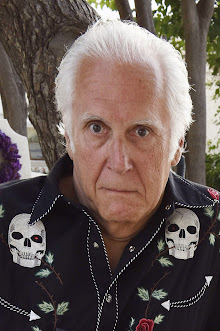Annamaria on Monday
William Thomas “Billy” Strayhorn was born on 29th
of November 1915. He was the greatest
composer of American jazz music ever.
Many of you will not recognize his name.
Spellcheck doesn’t even know it.
It recognizes Ellington, Armstrong, Gillespie, Basie, Gershwin,
certainly—but not Strayhorn. But Billy
is the one who gave jazz its greatest measure of elegance and emotional
subtlety. He wrote songs that told
stories of regret, resignation, temptation, loneliness—with melodies, rhythms,
and lyrics that communicated with perfect unity of effect. All beautiful, urbane, restrained, stylish, refined. Yet exciting.
Billy was born in Dayton, spent his early years falling in
love with music at his grandmother’s house in North Carolina and, back with his
mother, went to Westinghouse High School in Pittsburgh, an institution that
also gave us Erroll Garner and Ahmad Jamal.
By age nineteen, Billy was a professional musician. With no hope of making it in the white world
of classical music, he was brought to jazz by Art Tatum and Teddy Wilson. Fate had done jazz a favor.
And an even greater act of serendipity occurred in December
of 1938, one that brought together Billy and Duke Ellington. Billy Strayhorn had a hand in, was a moving
force in all the greatest songs we now associate with the Duke: “Take the A
Train,” “Chelsea Bridge,” “Lush Life” are all Strayhorn compositions.
Some people accuse Ellington of hogging all the credit for
Billy’s genius. That’s a complicated
subject. It is true that Strayhorn never
received royalties for the songs that he wrote that Ellington published. On the other hand, Ellington gave Billy a
musical home par excellence. And at a
time, in the 40’s and 50’s when Billy, who was openly gay, would have had a
hard time making it on his own.
Strayhorn got to write for and work with the greatest jazz musicians of
his era.
And the Duke did credit him.
Saying things like “Billy Strayhorn was my right arm, my left arm, all
the eyes in the back of my head, my brainwaves in his head, and his in
mine.” And “Strayhorn does a lot of the
work, but I get to take the bows.”
Next time you watch “Anatomy of a Murder,” listen carefully
to the soundtrack. Strayhorn and
Ellington composed it, and it was a landmark of film music composition.
Billy Strayhorn was an early civil rights activist, with
close ties to Dr. Martin Luther King. He
was Lena Horne’s best friend.
Now I’ll let his work speak for itself:
https://www.youtube.com/watch?v=mub-gyuPFlw
I am writing this on Sunday, the hundredth anniversary of
Strayhorn’s birth. He died in 1967, an
early death of cancer at the age of only fifty-one.
But he is immortal.


































